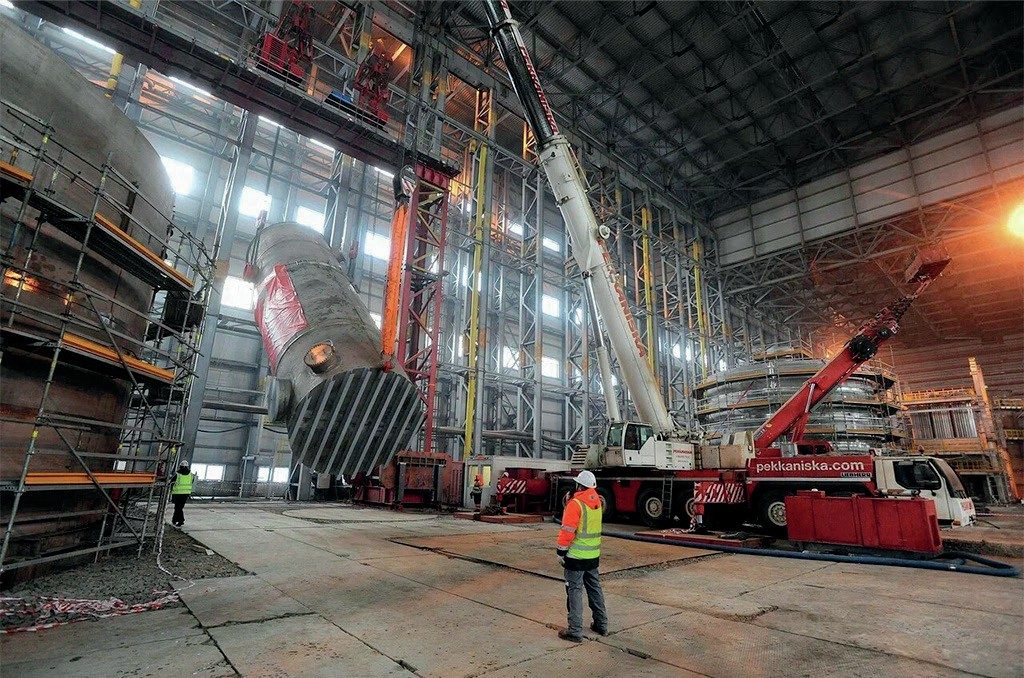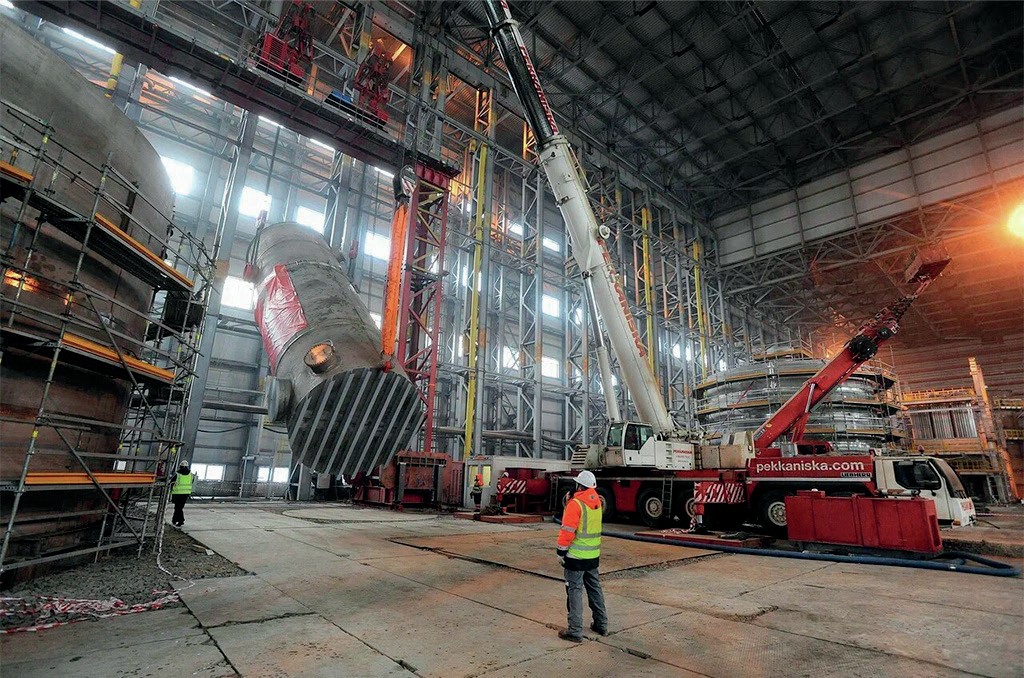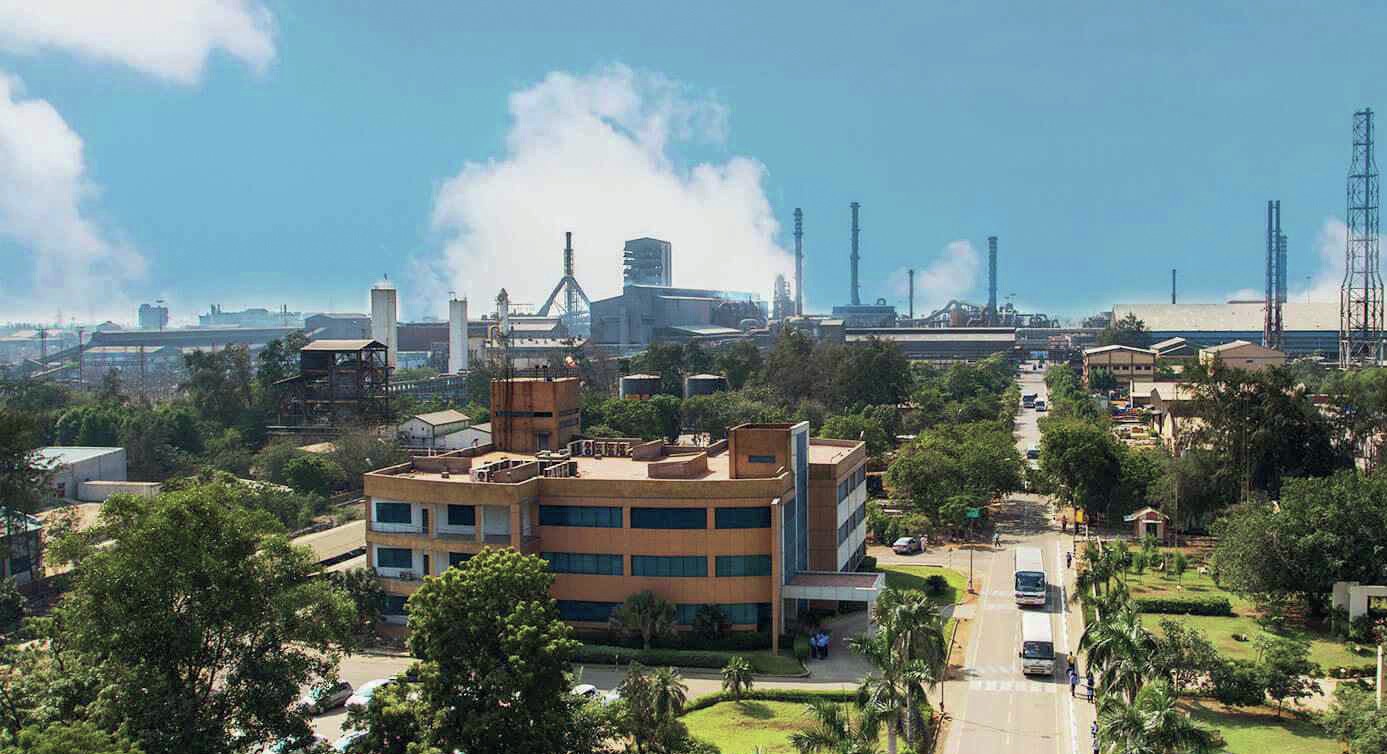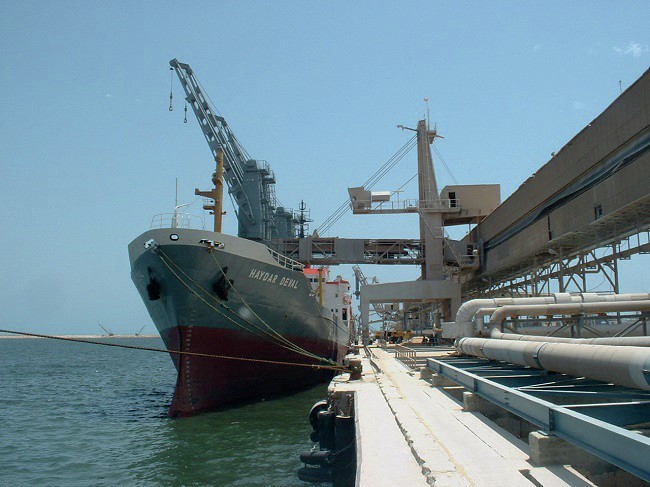Sulphur 400 May-Jun 2022

31 May 2022
Sulphuric Acid News Roundup
JORDAN
Memorandum on new phosphoric acid plant
The Jordan Phosphate Mines Company (JPMC) has signed a supply agreement with Germany’s LUMA-International Company.Under the terms of the agreement, JPMC will sell 850,000 t/a of phosphate rock to the German company at international market rates. The agreement was signed by JPMC CEO Abdulwahab Rawad and managing director of LUMA-International Ralf Keller, in the presence of JPMC Chairman Muhammad Thneibat. Thneibat expressed hope that the deal would open wider scopes of cooperation between the JPMC and German companies in the field of phosphate fertilizers, and Keller likewise said that his company was looking forward to more cooperation with the JPMC and new partnerships to produce phosphoric acid and phosphate fertilizers.
Two days later, the parties signed a memorandum of understanding (MoU) to establish and operate a new phosphoric acid plant in southern Jordan. At the signing, LUMA’s Keller praised the achievements of JPMC in production and exports, expressing appreciation for the JPMC’s efforts in being open to global markets and diversifying partnerships in this field. JPMC will, under the MoU, provide the new plant with its needs of phosphate rock to produce phosphoric acid, while LUMA commits to buying the entire output of the plant.
UNITED STATES
Fox River phosphate project moving forward
Canadian fertilizer developer Fox River Resources Corporation says that it has received a positive preliminary economic assessment (PEA) study for its Martison phosphate project and, with no current domestic production of finished phosphate products in Canada, the company believes that now is the time to advance the project. The proposed project, located near Hearst, Ontario, will include an open pit phosphate mine, a phosphate beneficiation plant, slurry pipeline, road corridor, and a ‘fertilizer conversion complex’ near to existing rail, power, and natural gas infrastructure. The latter will include a phosphoric acid plant, a super phosphoric acid plant, a granulation plant, a sulphuric acid plant with co-generation capacity, a warehouse and loadout facility, and a rail yard.
The economic assessment was based on capacities of 221,000 t/a of super-phosphoric acid, 474,000 t/a of granular monoammonium phosphate (MAP) and 247,000 t/a of granular nitrogen, phosphate, sulphur (NPS). The target market includes the Eastern Canadian provinces, Canadian Prairie provinces and US northern states, and the company says that the Martison facility will capture a freight advantage relative to US and offshore producers in this market, especially in nearby provinces where demand is projected to grow and where a larger share of output is forecast to ship over time.
Stephen Case, Fox River Resources Corporation CEO said: “Western Canadian phosphate market demand has doubled in the past decade and remains the fastest growing market in North America, a market which the Martison project is designed to serve. With no current domestic production of finished phosphate products in Canada and a competitive operating cost, Martison is uniquely positioned to capture these markets that are primarily served by producers in central Florida, Idaho and the Gulf Coast.”
RUSSIA
Nornickel continues installation for Sulphur Programme
With the first batch of five multi-tonne heat exchangers for Nornickel’s Sulphur Programme having arrived on-site at the Nadezhda Smelter, Nornickel has begun the next step – installation of the giant units in the factory’s confined space. Preparatory work made it possible to coordinate the contractors, the transportation and installation, which the company says are proceeding on schedule. Five of the 15 units have been hauled from the Dudinka port to the smelter, and the first one has now been mounted. The weight of the first unit installed is 147 tonnes, the heaviest one is 230 tonnes. All 15 are scheduled to be installed over a three month period. Their task is to aid the exchange of heat between the layers in the contact apparatus, which are being installed in parallel. The first heat exchanger is the start-up unit, which will take part in the start-up of the catalyst in the sulphur dioxide contact tank and play its part in reducing emissions.
“We will have to deliver 15 unique installation operations. Their uniqueness is that the weight and dimensions of the heat exchangers are different,” said Andrei Zhuravlev, project manager for the installation and assembly of the heat exchanger units.
“Construction of one of the biggest projects in the recent history of the Russian mining and metallurgical industry is in full swing. Within the next few months we will already be entering start-up mode for the individual facilities. Therefore, we expect that in 2023 we will be able to deliver on the Sulphur Programme goals and targets that we have set for ourselves at the Nadezhda Smelter,” said Sergey Dubovitsky, Nor-nickel Senior Vice President.

SOUTHEAST ASIA
Outotec awarded process technology contract
Metso Outotec says that it has been awarded a major order for key minerals processing technologies at a copper and gold plant at an undisclosed location in southeast Asia. The contract value of approximately e40 million has been credited to the firm’s Minerals division Q1 2022 orders received. Metso Outotec has a strong presence in southeast Asia including a Service Centre, which is able to support local mining customers.
DENMARK
Haldor Topsoe is now Topsoe
At the company’s annual general meeting on April 7th, the shareholders voted to change the name of Haldor Topsoe A/S to simply Topsoe A/S, as part of a rebranding strategy. Founded in 1940 by Dr Haldor Topsoe, Topsoe aims to become a global leader in developing solutions for a decarbonised world, supplying technology, catalysts, and services for the energy transition, including for challenging sectors such as aviation, shipping, and the production of crucial raw materials.
CHILE
Drought affects Antofagasta Q1 results
Antofagasta says that its financial performance in the first quarter was as weak as expected, as the Los Pelambres copper mine continues to be affected by the drought in Chile. Copper production in Q1 2022 was 138,800 tonnes, in line with guidance and is expected to increase quarter-on-quarter during the year. Production was 24.2% lower than in the same quarter in 2021 and 22.4% lower than in Q4 2021 mainly due to the expected temporary reduction in throughput at Los Pelambres because of the drought and lower grades at Centinela Concentrates. Higher input prices, particularly for diesel and sulphuric acid, and general inflation were largely offset by the weaker Chilean peso. Compared to the previous quarter, costs increased by 21.9% on lower copper production due to lower grades and throughput.
The company also said that the review of its Los Pelambres expansion project has been completed and group capital expenditure for the year is expected to be $1.9 billion. The Los Pelambres expansion project was 73% complete as at the end of Q1 2022.
INDIA
Paradeep claims to be the largest single site producer of phosphoric acid
In the past year, the Indian Farmers Fertilizer Collective (IFFCO) Paradeep plant produced 805,000 tonnes P2 O5 of phosphoric acid. The company says that this makes it the largest single site production plant for phosphoric acid in the world. IFFCO operates a single reactor plant with a daily production capacity of 2,650 t/d at Paradeep. The acid is used in the production of downstream phosphate-based fertilizers including DAP and NPS, and, the company says, reduces India’s dependence on imported complex fertilizers.

Petition for destruction of copper smelter
The Madras High Court has granted four weeks for the Tamil Nadu Pollution Control Board (TNPCB) to respond to a petition filed by activist Fatima, seeking to demolish the Sterlite copper smelting plant at Thoothukudi and forcing the owner Vedanta to take remedial measures for soil contamination, allegedly caused by the dumping of copper slag. Chief Justice Munishwar Nath Bhandari and Justice D. Bharatha Chakravarthy adjourned the hearing on the case after Vedanta disputed the claim that the soil had been contaminated because of the copper slag, and contended that the slag was actually used for road fills and in the cement industry. The company’s lawyer argued that the copper slag was not hazardous at all and stated that it was one of the prime grounds that Vedanta had taken before the Supreme Court, where its appeals against the factory’s closure by the Tamil Nadu state government, on the basis of alleged environment pollution, were still pending at present. The case was adjourned until after the Supreme Court decision on the matter.
Extra subsidy for phosphates
The Indian government has approved an additional subsidy $760 million for diammonium phosphate (DAP) fertilizers to keep a lid on prices for farmers. The subsidy had already been raised by 140% on March 1st for the 2022-23 financial year, but soaring global phosphate prices in the wake of the Russian invasion of Ukraine have necessitated additional support. Prices of phosphoric acid and rock phosphate increased by 92% and 99% respectively, over the 12-month period to March 2022. India’s subsidy bill was originally budgeted for just over a trillion rupees ($13.7 billion), but there are concerns that it could reach as high as $21.5-$25 billion.
TUNISIA
Tunisia doubles phosphate production in 1Q 2022
Tunisia’s phosphate production doubled to 1.3 million tonnes in 1Q 2022, compared to the same period in 2021, according to Gafsa Phosphate. The company is targeting production of 5.5 million t/a of phosphate for 2022, a 50% increase on 2021’s 3.7 million t/a, to take advantage of soaring phosphate prices due to the war in Ukraine. Tunisia has struggled to regain the major position it held as a phosphate exporter prior to the Arab Spring, when it averaged 8 million t/a of production. Strikes and other labour disputes cut output to around 3 million t/a for most of the 2010s.

AUSTRALIA
GM and Glencore enter multi-year cobalt supply agreement
Glencore and General Motors have announced a multi-year sourcing agreement in which Glencore will supply GM with cobalt from its Murrin Murrin operation in Australia. Cobalt is an important metal in the production of EV batteries, and the cobalt processed from Australia will be used in GM’s Ultium battery cathodes, which will power electric vehicles such as the Chevrolet Silverado.
By the end of 2025, GM plans to have capacity to build 1 million electric vehicles in North America, and has announced a series of actions to create a new and more secure EV supply chain, including projects targeting key EV materials and components.
“We are delighted to announce this collaboration and support General Motors in delivering its electric vehicle strategy,” said Ash Lazenby, Glencore US Cobalt Marketer and Trader. “Future facing commodities like cobalt play a pivotal role in decarbonising energy consumption and the electric vehicle revolution. Glencore is already a leading producer, recycler and supplier of these commodities, which underpin our own ambition of achieving net zero total emissions by 2050.”
The agreement will support Glencore’s Murrin Murrin high pressure acid leaching (HPAL) nickel and cobalt plant in Australia. In 2021, Murrin Murrin produced 30,100 t/a of nickel metal and 2,500 t/a of cobalt metal, down 17% and 14% respectively, year-on-year, reflecting a lengthy scheduled statutory shutdown in May/June and various maintenance issues earlier in the year.
INDONESIA
Loan secured for HPAL project
Indonesian nickel company PT Ceria Nugraha Indotama has secured a syndicated loan of $277 million from a consortium of Indonesian banks to help finance $2.2 billion worth of nickel processing projects. The loan was arranged via Bank Mandiri, Bank Jawa Barat Banten and Bank Sulawesi Selatan Barat to fund construction of a 23,000 t/a rotary kiln electric furnace (RKEF) plant in southeast Sulawesi province, the first of four that Ceria plans to build, with a total capacity of 252,000 t/a of ferronickel, as well as a high pressure acid leach (HPAL) plant with capacity of 103,000 t/a of mixed hydroxide precipitate (MHP). The first train of the RKEF plant is due to start commercial production in 2023 and the HPAL plant in 2024.
Freeport issues bond to finance smelter project
Freeport Indonesia has announced an offering of $3 billion in senior notes, as the company speeds up work on two copper smelters in the Southeast Asian country. Construction has already begun on the $3 billion smelter, designed by Metso Outotec, in Gresik on East Java. On completion, the facility will produce 1.7 million t/a of copper concentrate, making it one of the largest in the world. Commissioning is planned for late 2023 or early 2024.
Meanwhile, Linde has signed a contract with PT Smelting, co-owned by Freeport Indonesia and Mitsubishi, to supply additional oxygen to support the expansion of Smelting’s copper smelter operations at Gresik. The plant will utilize Linde’s vacuum pressure swing adsorption (VPSA) technology to produce oxygen using an adsorption process. The new plant is expected to be completed and go onstream by October 2023. PT Smelting is boosting copper cathode production to around 350,000 t/a.
“This new, long-term contract demonstrates the trust between Linde Indonesia and PT Smelting developed during our partnership spanning almost 25 years,” President Director of Linde Indonesia and Cluster Head for Indonesia, the Philippines, and Vietnam Vinayak Kembhavi noted in a statement received in Jakarta on Friday.
WORLD
Nickel production up in spite of Ukraine crisis
Global nickel smelting activity climbed in March, including in major producer Russia, despite the Ukraine conflict, according to commodities broker Marex, which uses SAVANT, a satellite analytics service it launched in 2019 to monitor activity at nickel plants worldwide. SAVANT has picked up disruptions at Ukraine’s only ferro-nickel producer, Pobuzhskiy, but not at Nornickel’s Nadezhda plant in Russia, Marex said. Russia supplies about 10% of the world’s nickel.
The company also noted that copper smelting activity was higher in March, despite problems at Chinese private copper smelter Yanggu Xiangguang that halted output.
UKRAINE
Metinvest to import sulphuric acid
Interfax Ukraine reports that Ukrainian steel producer the Metinvest Group is facing a deficit of sulphuric acid for its coke plants, and intends to import acid from the European Union. Metinvest has three coke plants which require acid for pig iron production. The company’s blast furnaces were shut down in the early days of the Russian invasion, but reopened in early April. The company is now looking at new logistics chains for both raw materials and finished products.
In 2021, the company’s Zaporizhstal subsidiary increased pig iron production by 0.1% to 4.5 million t/a. Steel production decreased by 0.1%, to 3.8 million t/a, while the production of steel rolled products remained at the same level as for 2020; 3.2 million t/a. In January-February 2022, the plant reduced its rolled products output by 8.7% to 502,400 tonnes.




